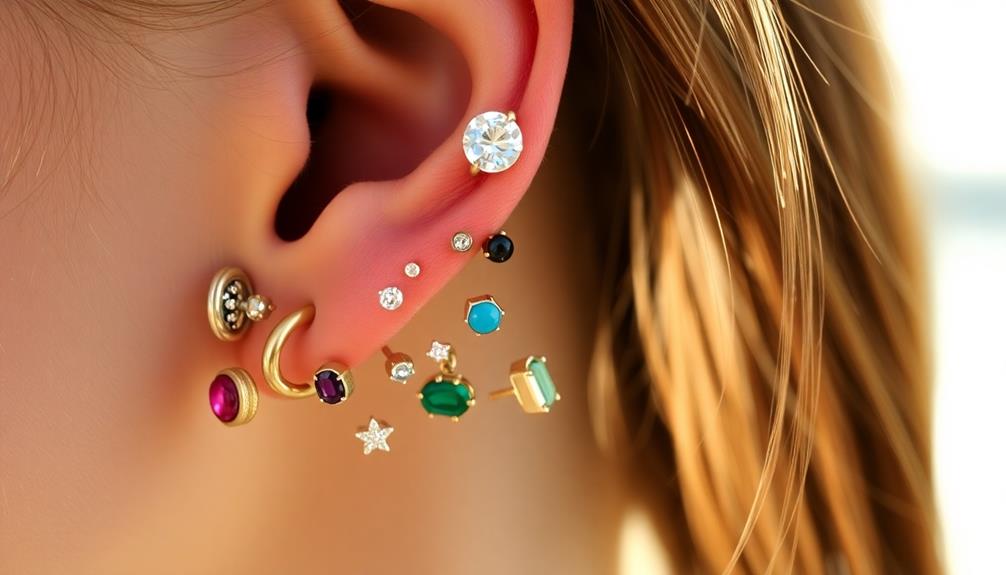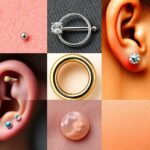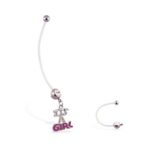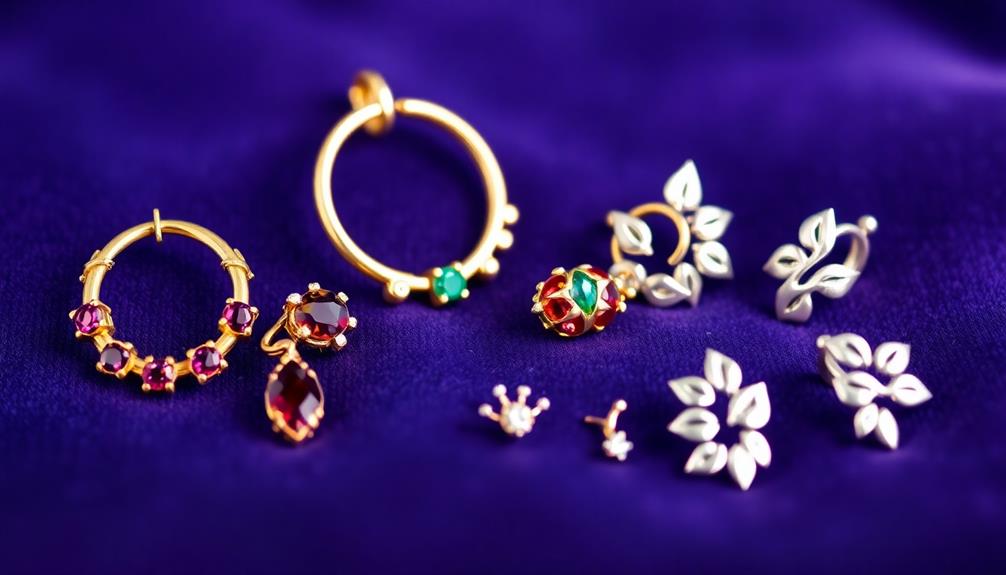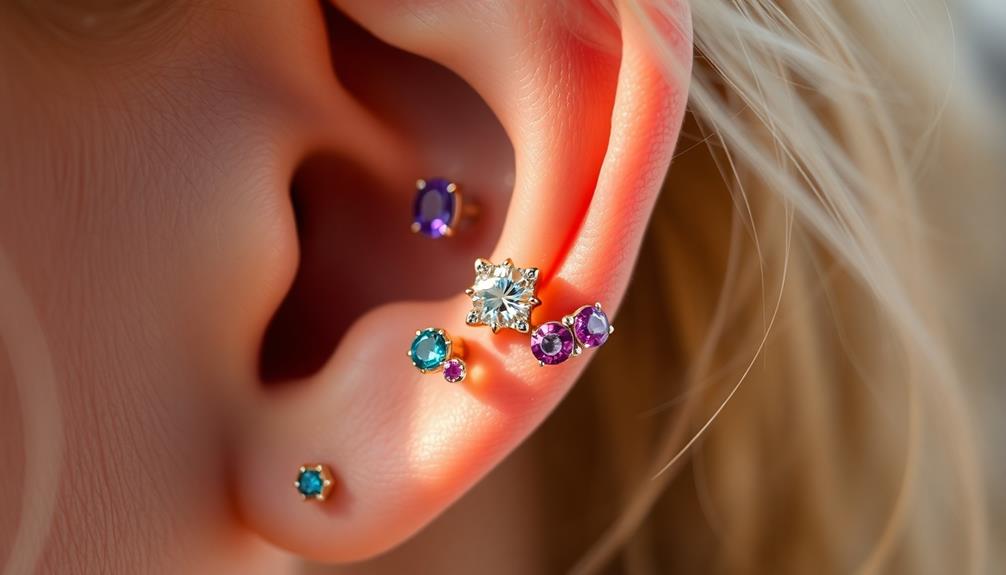When it comes to body piercing jewelry, your choice of material is essential for comfort and safety. Surgical steel and titanium are great for new piercings due to their hypoallergenic properties, but verify they meet safety standards. Bioplast is a flexible, biocompatible option for healing, while materials like acrylic and silicone should only be for temporary wear. Avoid organic materials due to their bacterial risks. Regular hygiene and care can help maintain your jewelry and prevent infections. You can explore various materials and their benefits to make the best choice for your body piercings.
Key Takeaways
- Surgical steel is durable and hypoallergenic, making it ideal for sensitive skin in body piercings.
- Implant grade titanium is lightweight and offers minimal allergic reactions, suitable for new piercings.
- Bioplast and PTFE are biocompatible materials designed to heal piercings without causing irritation.
- Acrylic and silicone should only be used temporarily, as they pose risks for long-term wear due to bacterial concerns.
- Organic materials provide unique aesthetics but are porous, increasing the risk of bacterial retention and infection.
Body Jewelry Material Overview
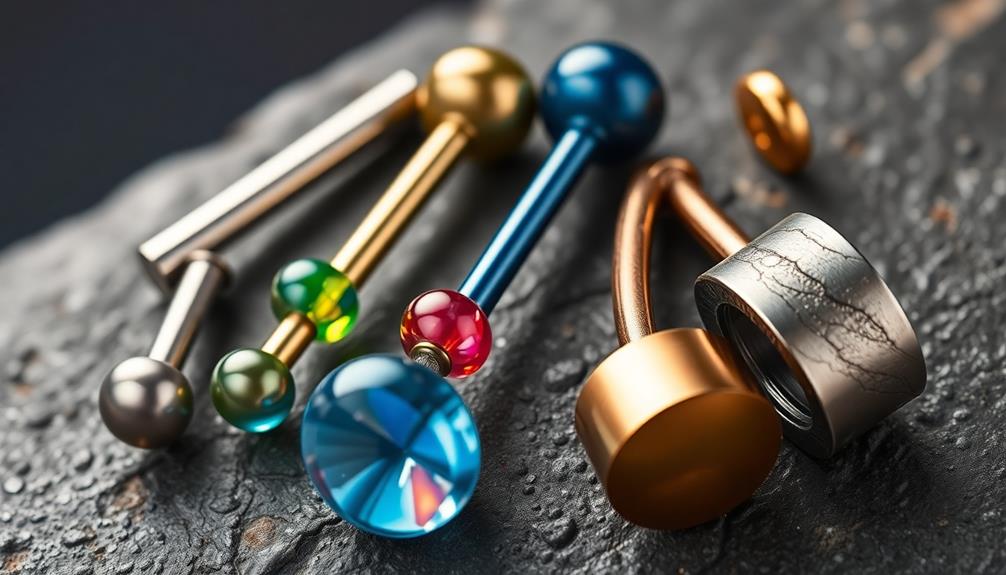
When it comes to choosing body jewelry materials, understanding your options is key to a safe and comfortable experience. For new piercings, titanium and surgical steel are the most commonly recommended materials due to their hypoallergenic properties and resistance to infection.
Implant grade titanium, which meets ASTM-F136 standards, is considered the highest quality choice. It offers minimal risk of allergic reactions, guaranteeing a safer healing process.
Surgical steel can also be a good option, but you should verify it meets ASTM-F138 standards. Keep in mind, however, that it often contains nickel, which may irritate sensitive individuals.
If you're looking for more flexible options, consider bioplast or PTFE. These biocompatible materials are specifically designed for healing piercings, conforming to your body tissue without causing irritation or adverse reactions.
While acrylic and silicone may be tempting, they aren't suitable for long-term use in piercings due to their fragility and potential to harbor bacteria. It's best to reserve them for temporary wear only.
Metals Used in Body Jewelry
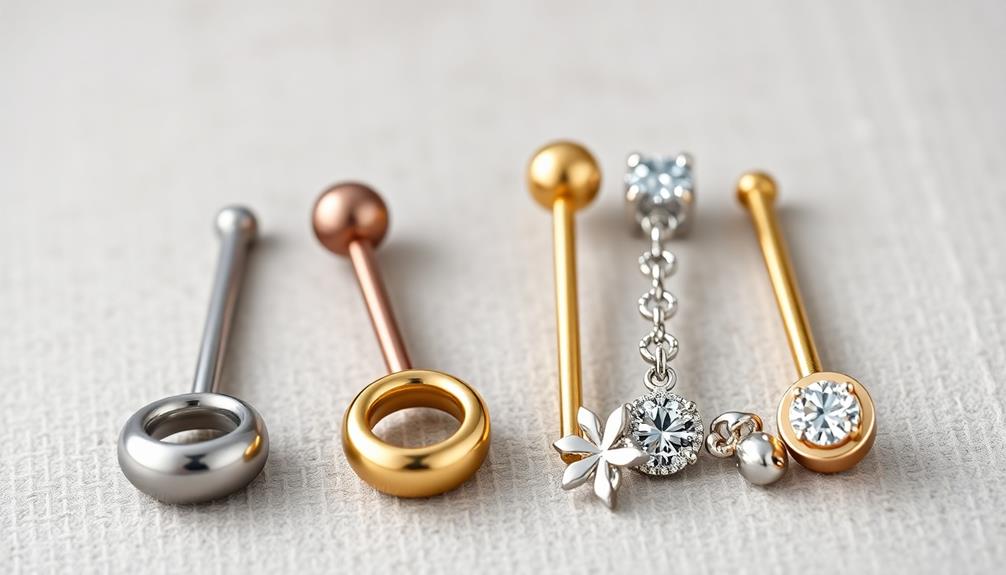
Choosing the right metal for body jewelry greatly impacts your comfort and safety. Surgical steel, specifically 316LVM ASTM F-138, is a top choice for sensitive skin due to its high purity and autoclavable properties. It's durable and minimizes the risk of irritation.
Titanium, particularly Grade 23 (6AL4V ELI F-136), is another excellent option. It's hypoallergenic, lightweight, and has low nickel content, making it perfect for new piercings. You can also enjoy a variety of colors through anodization.
If you're looking for alternatives, niobium is a heavier, biocompatible metal that works well for unhealed piercings. It can also be anodized for a range of colors, ideal if you're allergic to stainless steel.
When it comes to gold, only 14k or 18k gold is safe for body jewelry; lower grades may lead to migration or rejection.
Finally, PVD coated steel or titanium offers a durable, low-allergy, and scratch-resistant finish. Just remember, proper care is essential to maintain the coating's integrity over time.
Choosing the right metals guarantees a safer and more enjoyable body jewelry experience.
Non-Metal Materials for Piercings

While many people gravitate toward metal options for body jewelry, non-metal materials also offer unique benefits and aesthetics. Each type has its own characteristics that might suit your preferences or needs, especially if you have metal allergies.
Here's a quick comparison of some popular non-metal materials:
| Material | Key Features |
|---|---|
| Acrylic | Lightweight, colorful; unsuitable for long-term wear. |
| Silicone | Biocompatible, flexible; recommended for temporary wear. |
| Bioplast | Hypoallergenic, flexible; not for long-term use. |
| Organic Materials | Unique aesthetics; porous, risk of bacterial retention. |
Acrylic is fun and vibrant but can harbor bacteria due to scratches, making it best for occasional use. Silicone is perfect if you have metal allergies but shouldn't be worn for too long to avoid issues like auto-stretching. Bioplast is a solid choice for healing piercings, though it also carries the risk of bacterial accumulation. Finally, organic materials like wood and bone provide stunning visuals but must be approached with caution due to their porous nature. Remember, these materials are best suited for temporary wear!
Risks of Various Materials
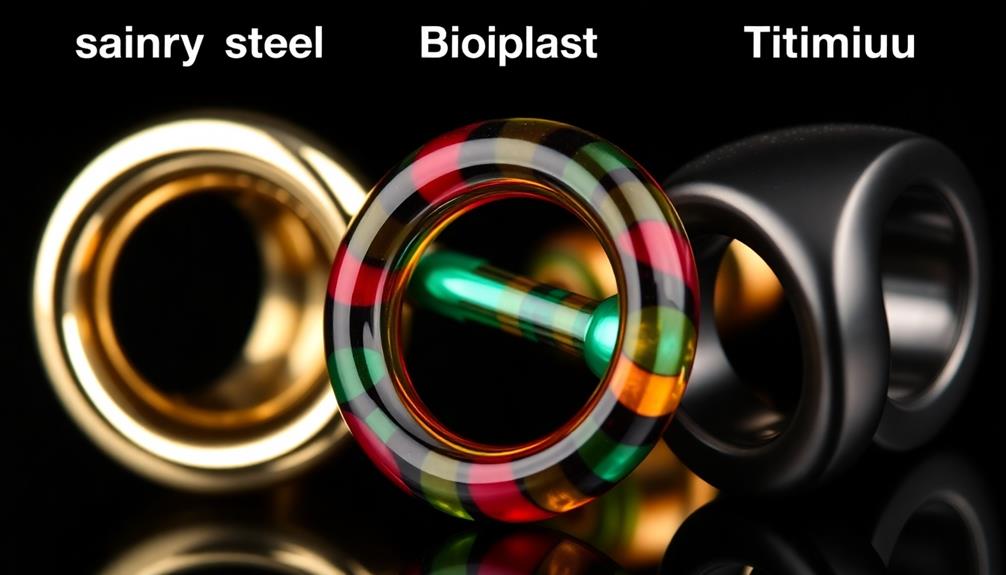
Non-metal materials may seem appealing for body jewelry, but they come with their own set of risks. Take acrylic, for instance; it's fragile and can't be autoclaved, increasing your risk of infection during healing.
Additionally, just like with the costs of home security systems, it's important to take into account the long-term implications and potential hidden dangers associated with cheaper materials. Silicone, while biocompatible, should only be used temporarily. It can create suction that blocks natural seepage, potentially leading to infections.
Bioplast is another option, being hypoallergenic and flexible, but it can harbor bacteria in scratches and isn't meant for long-term wear, complicating hygiene.
Organic materials might look great, but their porous nature allows bacteria to thrive, making them unsafe for new piercings. Silver jewelry often contains nickel alloys, which heightens the risk of allergic reactions and skin irritation compared to implant-grade materials like titanium and niobium.
These materials are designed for safety and reduce the chance of complications.
When choosing body jewelry, it's essential to weigh these risks against your preferences. Always prioritize your safety and hygiene over aesthetics, especially during the healing process, to guarantee a successful and infection-free experience.
Care and Maintenance Tips

To guarantee your body jewelry stays safe and appealing over time, proper care and maintenance are essential. Different body jewelry materials require specific attention to maintain their integrity and prevent issues.
Here are some key tips for effective care and maintenance:
- Clean Regularly: Use antibacterial soap and warm water to clean your jewelry before each use. This minimizes the risk of infections and irritation, especially with surgical steel and hypoallergenic metal types.
- Regular Inspection: Frequently check your jewelry for signs of wear, such as scratches or fading. This is particularly important for colored or coated items to ascertain ongoing safety.
- Proper Storage: Store precious metals like gold and platinum in a cool, dry place, away from harsh chemicals. This helps maintain their luster and prevents tarnishing.
- Sterilize Materials: For autoclavable materials, follow the manufacturer's guidelines for sterilization to make certain they're safe for healing piercings.
For non-metal options like silicone, avoid exposure to extreme temperatures to prevent degradation.
Frequently Asked Questions
Is Bioplast Bad for Piercings?
Bioplast isn't inherently bad for piercings, but it's best for initial healing. Just remember, it can harbor bacteria over time, so keep it clean and check for wear to avoid potential issues.
Are Bioflex and Bioplast the Same Thing?
No, Bioflex and Bioplast aren't the same. Bioflex is a specific brand of flexible polymer, while Bioplast is a broader category of biodegradable plastics. Each has unique qualities suitable for different piercing needs.
What Is the Bioflex Material for Piercings?
Bioflex is a flexible, safe material for piercings. It's biologically inert, promotes healing, and reduces inflammation. Its ultra-smooth surface prevents irritation, making it ideal for both new and healed piercings. It's sterilizable too.
Is Surgical Steel Safe for Body Piercings?
When it comes to safety, surgical steel's got your back. It's generally safe for body piercings, but if you're sensitive to nickel, you might wanna opt for nickel-free options to avoid irritation.
Conclusion
When choosing body piercing jewelry, it's essential to contemplate the materials for both safety and comfort. Did you know that about 30% of people with piercings experience an adverse reaction to certain metals? By opting for high-quality materials like surgical steel or bioplast, you can greatly reduce the risk of irritation and infections. Remember, proper care and maintenance can extend the life of your jewelry and keep your piercings healthy. Choose wisely, and enjoy your unique expression!
Hi, my name is Danielle, and I’m an author for piercings-body.com. I have a passion for writing and love to share my knowledge on all things body piercing-related. I’m also a huge advocate for safe body modification practices and believe everyone should be able to make informed decisions about their bodies. When I’m not writing or blogging, I enjoy spending time with my family and friends, practicing yoga, and exploring new places.


